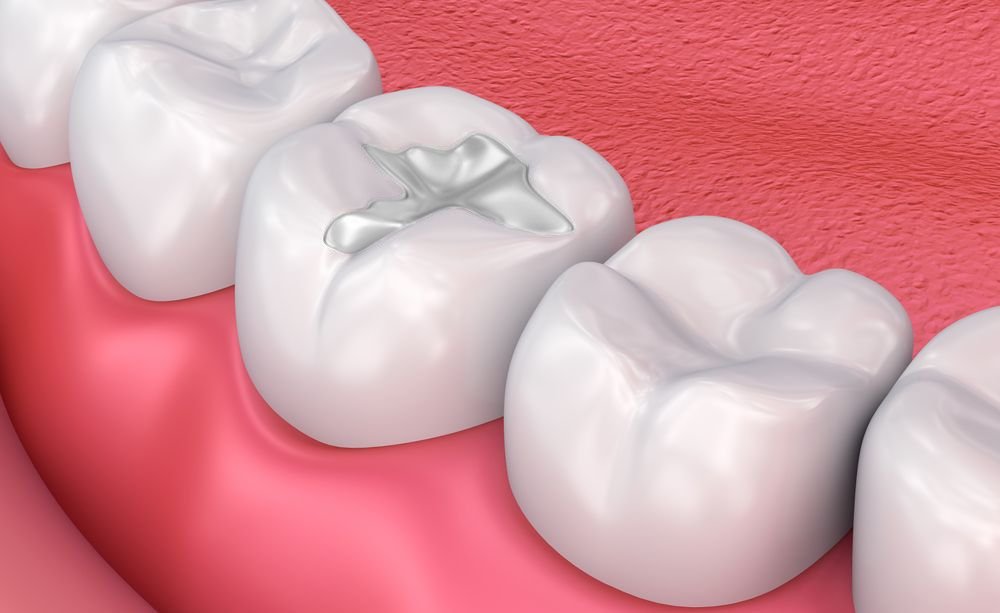Dental Fillings: Repair Cavities and Restore Your Smile
- Expert Dental Care by Dr. Sagar Lokhande
- Service
- Dental Fillings
Dental Fillings
Cavities are common but treatable with dental fillings. At Pristine Smiles Dental Care, we provide advanced, minimally invasive filling treatments that blend seamlessly with your natural teeth to restore your smile and prevent further decay.
What Are Dental Fillings?
Fillings restore damaged teeth by filling cavities or repairing chips and cracks. They prevent bacteria from re-entering the tooth and stop decay from spreading.

Why You Might Need a Dental Fillings
Dr.Sagar Lokhande
Types of Dental Fillings Offered at Pristine Smiles Dental Care
We believe in providing personalized care, which is why we offer a range of filling options based on your needs and preferences:
Composite (Tooth-Colored) Fillings
Composite fillings are made from a resin material that matches the natural color of your teeth, making them virtually invisible.
Benefits:
Aesthetic: Blends seamlessly with your tooth.
Versatile: Ideal for both front and back teeth.
Bonds directly to the tooth, adding extra strength.
Best for: Patients looking for a natural, discreet restoration.
Benefits:
Best for: Patients looking for a natural, discreet restoration.
Amalgam (Silver) Fillings
Amalgam fillings are a mixture of metals, including silver, mercury, tin, and copper, and have been used in dentistry for over 150 years.
Benefits:
Extremely durable and long-lasting.
Cost-effective for larger cavities.
Drawbacks:
Silver color makes them more noticeable.
May expand or contract slightly with temperature changes.
Best for: Molars and back teeth that undergo heavy chewing pressure.
Benefits:
Drawbacks:
Best for: Molars and back teeth that undergo heavy chewing pressure.
Glass Ionomer Fillings
Glass ionomer fillings release fluoride over time, which helps strengthen the surrounding tooth structure and prevent further decay.
Benefits:
Preventive: Releases fluoride to help protect teeth.
Ideal for pediatric fillings and small cavities.
Drawbacks:
Less durable than composite or amalgam fillings.
Best for:Cavities near the gum line or for children’s teeth.
Benefits:
Drawbacks:
Best for:Cavities near the gum line or for children’s teeth.


step 1
Diagnosis and Consultation
1We begin by examining the affected tooth using digital X-rays to assess the extent of the decay or damage. Once confirmed, we’ll discuss the best type of filling material for your case.
step 2
Numbing the Area
2A local anesthetic is applied to numb the tooth and surrounding gums, ensuring that you won’t feel any pain during the procedure.
step 3
Removing the Decay
3The decayed portion of the tooth is carefully removed using specialized tools. We ensure that only the affected part is removed, preserving as much healthy tooth structure as possible.
step 4
Filling Placement
4The filling material is placed in layers, shaped to match your tooth’s natural contours, and hardened using a curing light (for composite fillings).
step 5
Polishing
5The final step involves smoothing and polishing the filling to ensure a comfortable bite and a natural appearance.
Dr.Sagar Lokhande
How Long Do Dental Fillings Last?
- Composite fillings: 7–10 years with proper care.
- Amalgam fillings: 10–15 years, thanks to their durability.
- Glass ionomer fillings: 5–7 years, depending on the location and wear.
Regular dental check-ups can help ensure your fillings remain in good condition and catch any signs of wear early.
How Long Does a Dental Filling Take?
A standard filling procedure typically takes 30–60 minutes per tooth. Composite fillings may take slightly longer due to the layering process, but they provide a more natural-looking result.
Post-Filling Care Tips
With proper care, your dental fillings can last for years and protect your teeth from further damage.
Why Choose Pristine Smiles Dental Care for Your Dental Fillings?


Common Questions About Dental Fillings
Do fillings hurt?
The procedure is painless due to local anesthesia. You may feel mild sensitivity after the procedure, but it typically subsides within a few days.
Can I eat immediately after a filling?
For composite fillings, you can eat soft foods after the anesthesia wears off. For amalgam fillings, it’s best to wait at least 24 hours before chewing on the filled side.
What happens if I don’t get a cavity filled?
If left untreated, a cavity can grow larger, potentially reaching the nerve of the tooth and requiring more extensive treatments like root canals or extractions.
